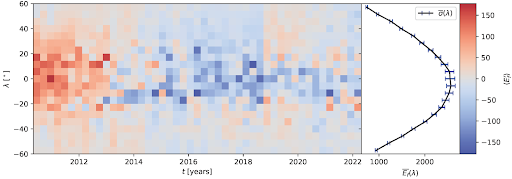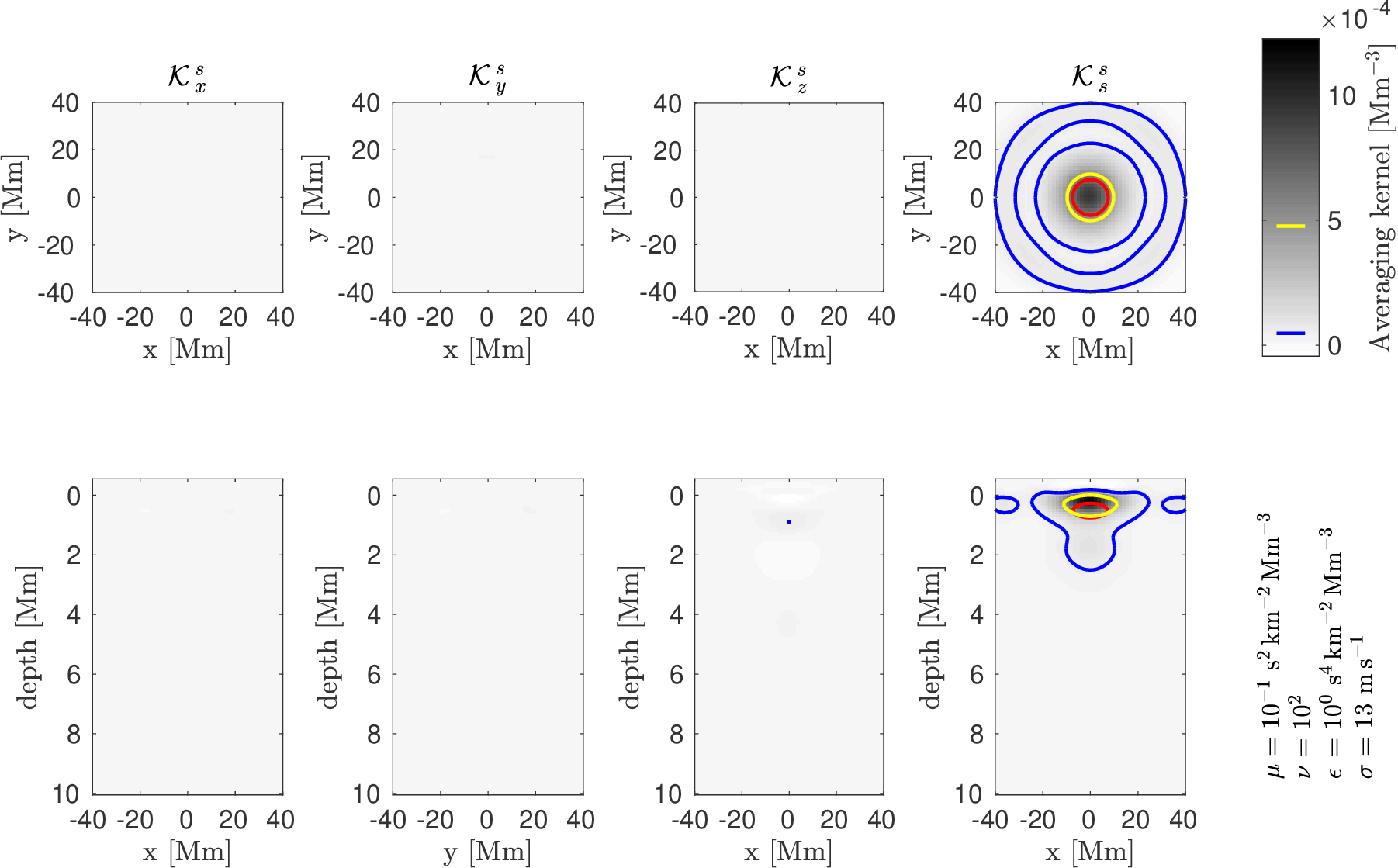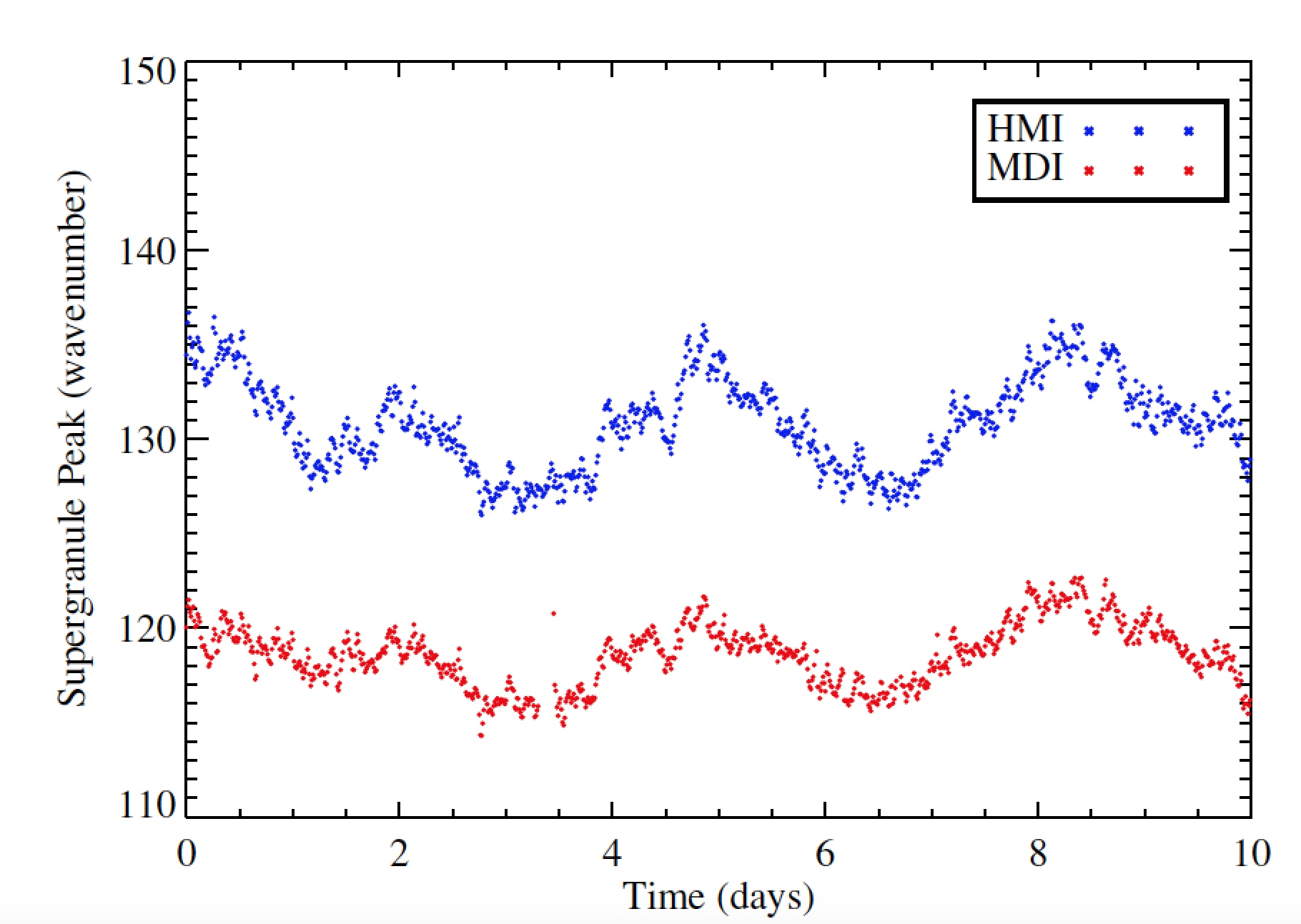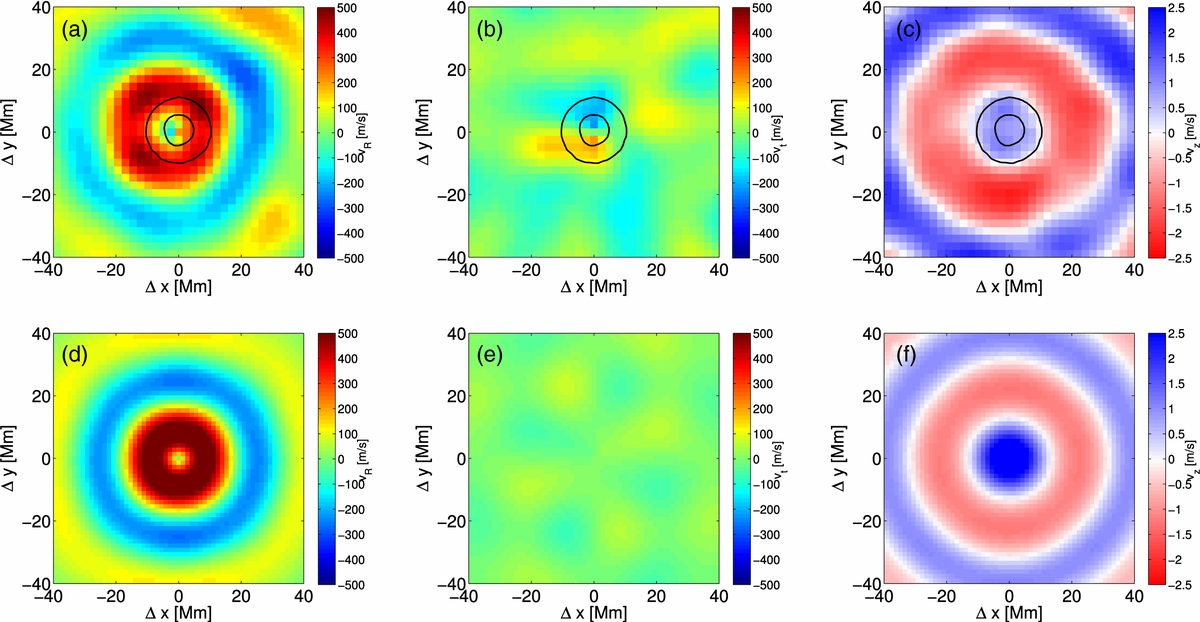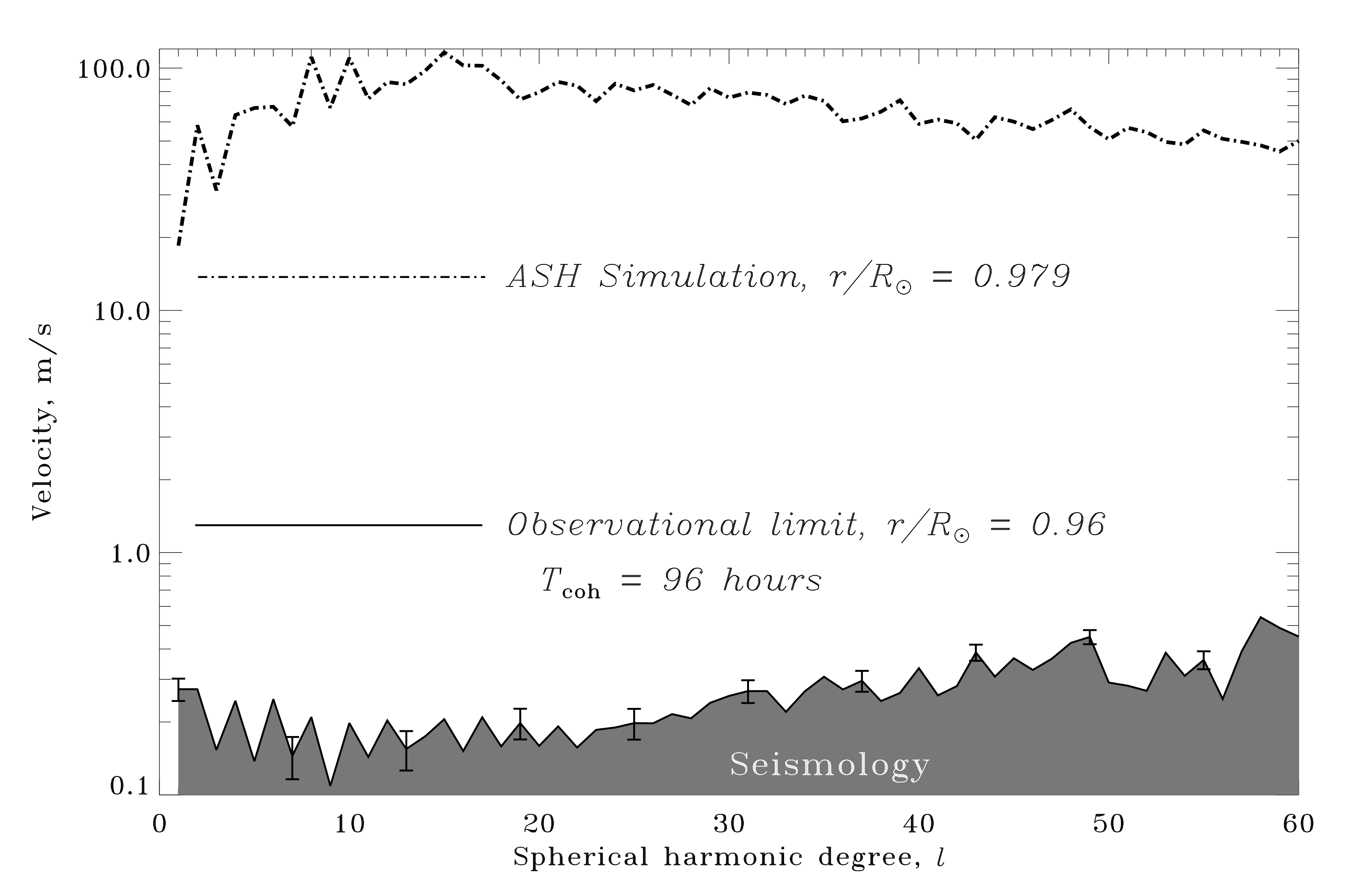Tag Archives: supergranules
155. Hydrodynamic Properties of the Sun’s Giant Polar Vortices
122. Simultaneous Inversions for Vector Flows and Sound-Speed Perturbations
35. Fluctuations of Supergranulation Verified Through Spectral Analysis of HMI Doppler Images
28. Sunspot moats versus supergranules
27. Anomalously Weak Convection on Large Scales in the Sun
Observed seismic upper bounds on large-scale lateral (horizontal) convective-velocity amplitudes in the solar interior at the depth r/R = 0.96 do not agree with modeling results derived at a similar depth from global convection simulations. The observations of low convective-velocity amplitudes throw into question our understanding of thermal and angular momentum transport in the Sun.

